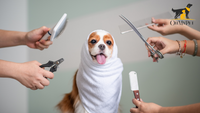You don't need to feel alone if your dog or cat has diabetes mellitus. Diabetes affects 1 in 100 dogs over 12 years old. Cats are prone to diabetes between 1 in 50 and 1 in 500. A dog or cat with diabetes has insufficient insulin levels or an abnormal insulin response.
Diabetes mellitus is more common in older dogs, especially females, but it can also affect young dogs, both sexes. It means related animals may also be vulnerable to diabetes if seen in younger animals. However, diabetic dogs also come in certain breeds.
Overweight and middle-aged cats are more likely to develop diabetes mellitus. Also, sterilized males are at a higher risk. It's more common in certain breeds, like Siamese cats.
Can your dogs or cats be cured?
Sadly, diabetes can't be cured. Nevertheless, suppose you set up a healthy lifestyle for your dog or cat, such as good glycemic control with a diabetic product. In that case, pets will likely live a long, healthy life.
Nonetheless, diabetes in cats can be short-lived or go into recovery, but it's probably for life.
Diabetic Mellitus Symptoms
If you see any of these signs, you should take your pet to the vet.
1. Constantly pees
2. Drinks a lot of water
3. Eats all the time
4. Losing weight
5. Cloudy eyes
6. Deteriorated coat
7. Less active or sleeps more
Diagnosis
It's possible to see these signs in other diseases too. The diagnosis is definite when glucose is detected in the urine and blood at high levels. Hence, a veterinarian must examine your dog or cat thoroughly.
Your veterinarian will measure the glucose content in blood and urine to confirm the diagnosis. Additionally, they will check your pet's general health (to rule out anything else). Diabetes can be harder to manage if you have infections, some conditions, or other medications.
Treatment & Management
Your dog or cat may need medication such as FDA-approved veterinary insulin. You can usually control diabetes in your pet by giving insulin injections daily. Your veterinarian will suggest the appropriate treatment if your pet also has other conditions.
Your vet will help you determine the correct dose for your dog or cat. There's no need to worry, but it may take a few weeks. Once you've got the correct insulin dose, you have to give your pet his therapy at the same time every day.
It'll take some time to get used to this. However, the process will be relatively painless and quick after you and your pet get used to it.
You'll also get a management program from your vet that includes feeding recommendations (type, quantity, timing). Regular exercise is also suitable for diabetic pets, significantly overweight ones.
Dietary Restrictions
Your pet's health depends on when and what you feed. So you have to give your pet the proper diet in the correct quantity daily with insulin injections.
Generally, diabetic animals need to feed two to three times a day. So before giving each insulin shot, ensure your pet has eaten well.
Having insulin first could cause hypoglycemia if the animal doesn't eat. Free-choice cats, however, don't need to change their lifestyle as long as they're eating normally.
What to Feed
You should not give your vet table scrap treats or other foods. If your diabetic pet needs a special diet, don't let them have access to other pets' food.
You must keep your pet's food constant regarding its ingredients and nutrients. Food composition can affect diabetic control. Commercial pet food, especially grocery store brands, is made from "open" formulas so that components can vary from batch to batch.
Your pet needs a healthy diet for diabetes. You can find the best pet food and grooming products at OhmyPet.







